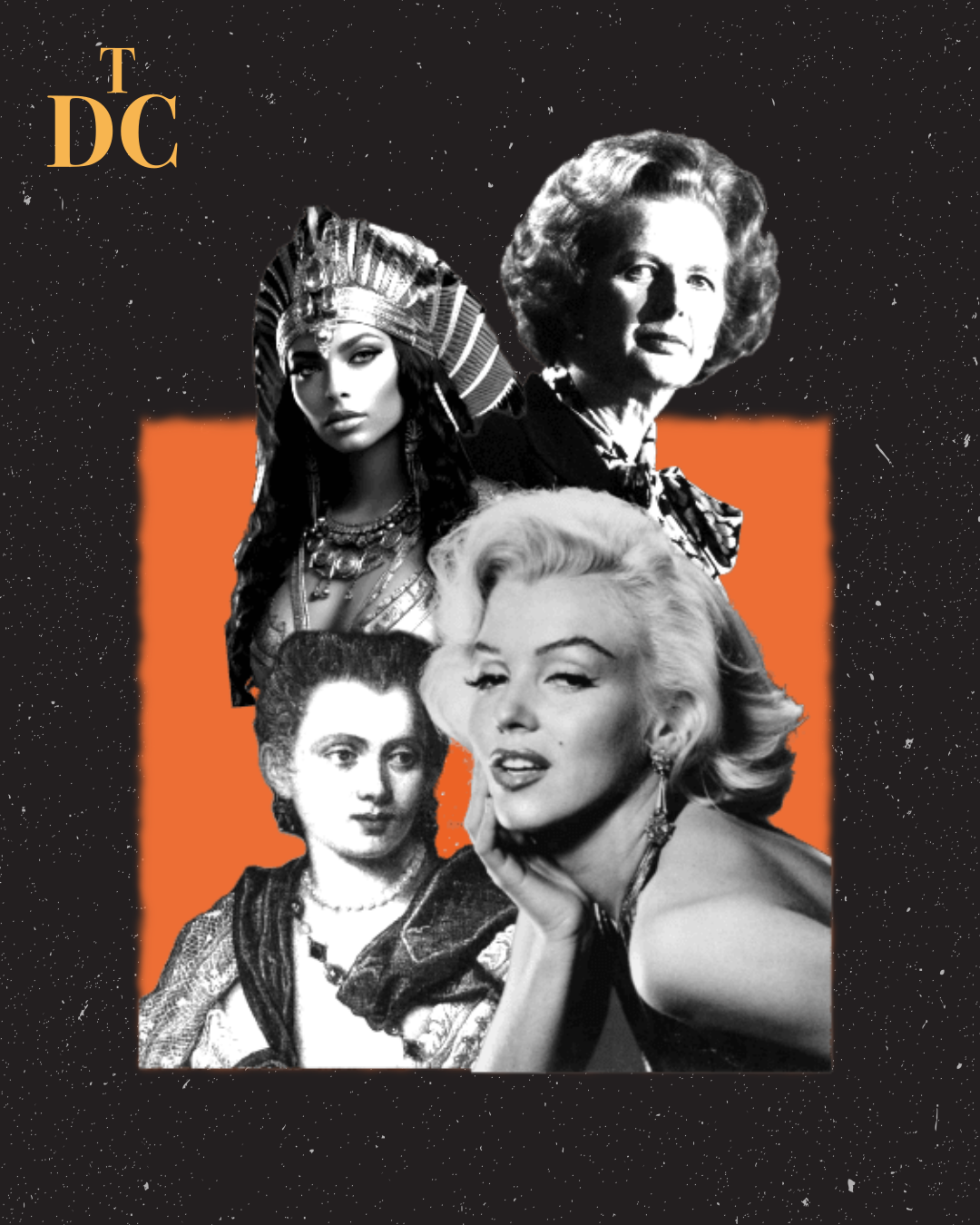Who Put The Damsels in Distress?
Sadia Tasmia

Have you ever heard stories about witches when you were a kid? Witches that were chased down and burned alive by both witch hunters and people. Ever ponder the true identities of these women? Why were they accused of being witches and believed to be deserving of such a horrible fate?
Most of the witches were just exceptionally gifted women, putting aside personal vendettas and some actual witchcraft. When women showed intellectual curiosity, pursued education, or engaged in activities that were customarily associated with men, mistrust was often directed towards them. Women who were intellectually curious were seen as a threat to the status quo in regions where women were expected to be docile and conform to traditional gender roles. This suspicion could lead to accusations of witchcraft, particularly if a woman’s interests are seen as outliers or heretical.
Even though these were typical situations in the 16th and 17th centuries, not much has altered in the last few years. If you pay close attention, you may easily identify a pattern in which important women are either vilified or sexualized by society.
This article features prominent women from many fields. women who, throughout the years, were greatly misunderstood and silenced.
What is the first name that comes to mind every time you hear terms like exceptionally beautiful or gorgeous? For the majority of you, it would be none other than Cleopatra. But does she come to mind when you hear the term great leader? No. Because that is how history has shaped you.
Cleopatra VII was the last active ruler of the Ptolemaic Kingdom of Egypt, an identity that was suppressed under the portrayal of her as a seductress who used her beauty and charm to entrap powerful men, such as Julius Caesar and Mark Antony. This sexualized image of Cleopatra has been perpetuated in literature, art, and popular culture, obscuring her political acumen and leadership abilities. In some historical accounts, Cleopatra was a skilled politician and diplomat who navigated the complex power dynamics of the Mediterranean world with considerable success, but instead she is always portrayed as a passive figure who was manipulated by the powerful men in her life, particularly Julius Caesar and Mark Antony.
Beside her leadership qualities, Cleopatra also contributed to the arts, sciences, and the revival of traditional Egyptian religious practices.
While talking about Cleopatra, another iconic woman follows who is still, after so many years of her death, considered to be a sex icon: Marilyn Monroe, one of the most iconic figures of the 20th century. For decades, Marilyn Monroe has been represented as all the white, blonde stereotypes. Her life is sometimes depicted as a tragic tale of a vulnerable woman who was taken advantage of and ultimately ruined by the men in her life and the demands of fame.
While Monroe’s sensuality and beauty undoubtedly contributed to her public profile, her humorous and tragic roles in movies like “Some Like It Hot” and “The Seven Year Itch,” as well as her numerous honors, should be her greatest known contributions.
She is educated and ambitious, yet preconceptions about blonde women are perpetuated by her frequent portrayal as shallow or dumb. In actuality, Monroe was politically savvy, well-read, and actively involved in her own professional and personal growth.
Veronica Franco, an Italian poet and courtesan from the 16th century, was another lady who dealt with relatively comparable social attitudes as Marilyn Monroe. Franco is frequently portrayed as a seductive and cunning courtesan who charms and seduces wealthy patrons. Certain depictions of Franco highlight her challenges and tribulations, depicting her as a tragic persona who was subjugated and finally destroyed by the repressive patriarchal culture she called home. This image ignores Franco’s literary prowess, wit, intelligence, and agency in negotiating the intricate social and political realities of Renaissance Venice.
Sometimes people confuse or misunderstand Franco’s career as a courtesan as being the same as prostitution. Indeed, courtesans in Renaissance Venice held a distinct place in society and culture, having a degree of autonomy and power that was unusual for women in those days. Franco used her status as a courtesan to her advantage in order to advocate for women’s rights, enter elite circles, and fulfill her desire to write.
Generations of feminists and academics have been motivated by Franco’s life and work to reconsider the place of women in Renaissance culture and to acknowledge the strength and independence of strong, independent women like her, in spite of the obstacles and discrimination she encountered. Franco established a lasting legacy of rebellion and empowerment that still has resonance today by questioning conventional gender standards and standing up for herself in a world dominated by men.
Margaret Thatcher is a name that should be brought up when discussing the decades-long distortion of women. Margaret Thatcher was the first female prime minister of the United Kingdom. Although she had her fair share of continuous controversy, Thatcher was subject to misogynistic attacks and caricatures based on her gender. It was sometimes done to weaken her authority and discredit her leadership because she was depicted as being extremely violent or masculine.
Speaking of misrepresentation, let us introduce the archetypal “Ice Queen” of the fashion world, Anna Wintour, the powerful and long-serving editor-in-chief of Vogue magazine. Because of her frequent portrayal as distant, cold, and unapproachable, Wintour is known as “Nuclear Wintour” or “Ice Queen.” This misconception ignores her expertise, commitment to her career, and the regard she enjoys in the fashion business. Although Wintour is arguably one of the most powerful people in the fashion industry, her duties as editor-in-chief include directing Vogue’s editorial direction and selecting the magazine’s content, for which she is often portrayed as a despotic figure who sets trends and forces her own preferences on the business.
Even though Wintour is most recognized for her contributions to the fashion industry, she also engages in advocacy and philanthropic work, such as bringing designers from a variety of backgrounds to the light and organizing fundraisers for AIDS research. But occasionally, her connections to Vogue and the fashion industry overshadow these facets of her job.
There have been such misinterpretations even closer to home, in India. Shakuntala Devi, a celebrated Indian mathematician, is often depicted as merely a “human computer” who has the unusual gift of doing complex mathematics in her head. However, Devi does have exceptional skills in math and became famous for her ability to solve mathematical problems quickly; this aspect often narrows down to her achievements only. This narrow focus fails to recognize the work, practice, and dedication that she put in over many years to develop her mathematical abilities, as well as the unique challenges she faced as a woman attempting to learn and work within male-dominated fields.
Devi was not just good at mathematical equations; she was also an author, teacher, and campaigner for numeracy and mental arithmetic. Her books dealt with mathematical theory, riddles, and astrology, while she spent much of her time traveling the world and giving speeches.
Being a female among the predominating males within this field, Devi had to face stereotypes based on gender, which could have shaped public perceptions concerning her talents as well as accomplishments. But despite these difficulties, she never allowed herself to be defined by society’s gender norms dictated to women. Rather, with relentless efforts, she paved the way for future generations of women in STEM fields and inspired countless individuals around the world to embrace their mathematical talents.
Even though there is no limit to women to whom history and society could not do justice, we had to put the full stop somewhere, and this article would be incomplete. It would be a shame if we didn’t include Ada Lovelace here.
Despite being called the “first programmer” many times, Lovelace’s contributions to computing, including her pioneering algorithm for Charles Babbage’s Analytical Engine, are occasionally misinterpreted or oversimplified. Her work went beyond coding, as she also expressed visionary ideas about computers’ possibilities beyond the mere arithmetic on which it was based. While collaborating with Charles Babbage, she has, in some cases, put him more in focus than herself in historical narratives.
Her computer-related achievements were not fully recognized or appreciated by her contemporaries due to the prevalent gender biases of that day and age. Today, some still downplay or dismiss what she did, with some doubting if she really did anything significant in relation to the Analytical Engine invention.
Like Shakuntala Devi, Lovelace also paved the way for future generations of women in STEM fields, breaking all the gender stereotypes.
From Cleopatra to Anna Wintour, these women have faced a range of challenges, from being reduced to stereotypes like the seductive temptress or the intellectual prodigy to having their accomplishments overlooked or minimized. The stories of remarkable women throughout history are continuously marred by misrepresentation and distortion, perpetuated by prevailing stereotypes, biases, and power dynamics.
Tags: none
![Henry A. Kissinger in 1979 [Neil Leifer/Sports Illustrated, via Getty Images]](/post-images/20231130-kissinger.jpg)
![Professor Abdul Basir, a faculty member in the Department of Islamic History and Culture at DU | Professor Nisar Hossain, Dean of the Faculty of Fine Arts [Image collected]](/post-images/20240822-du.jpg)

![Anjir Liton, former DG of Bangladesh Shishu Academy [Image collected]](/post-images/20240822-shishu-academy.jpg)